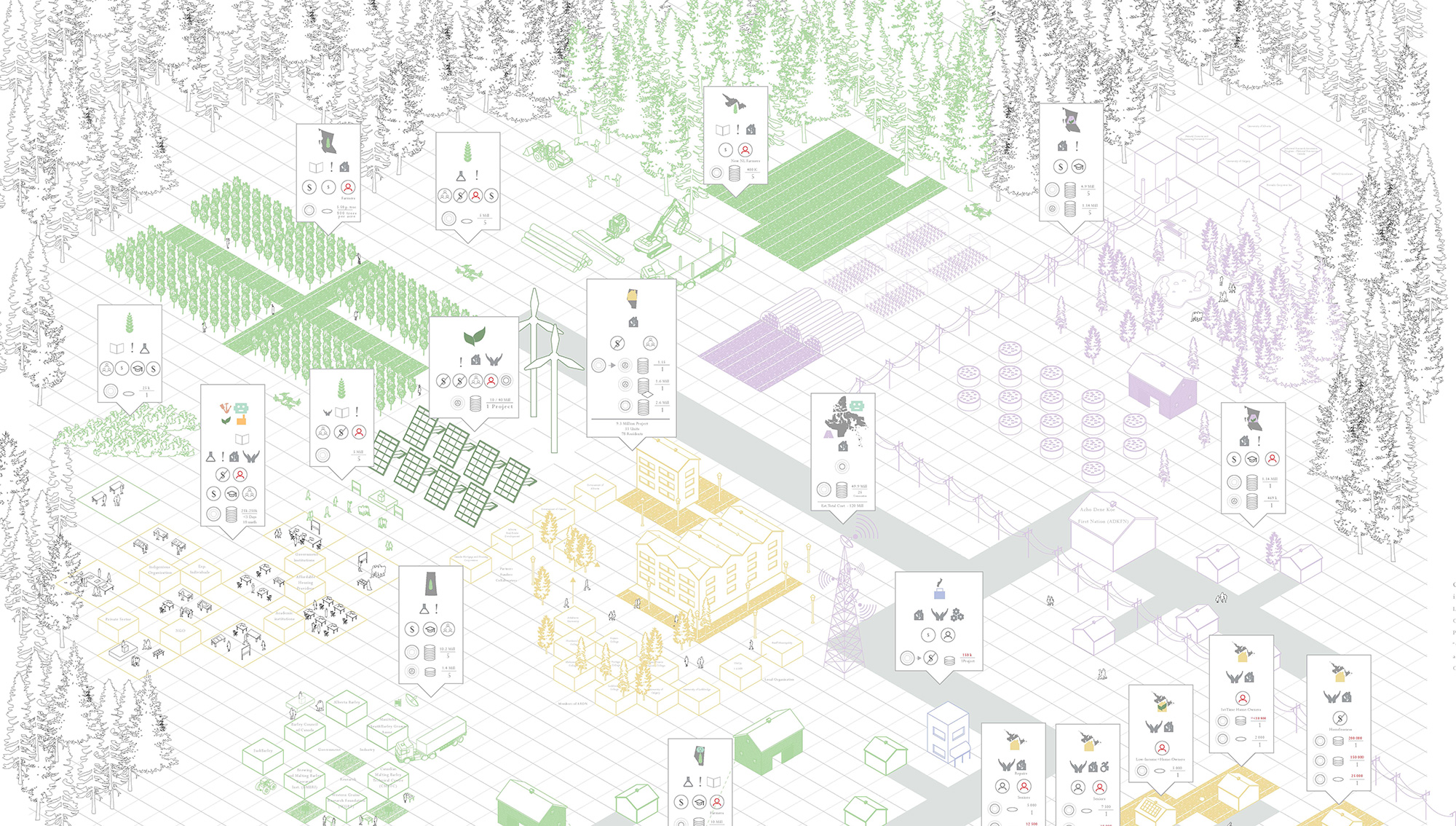
Isabel Amos, "Fun[d]town"
Isabel was interested in the way government funding shapes land development in Canada's rural regions. "I was trying to understand some part of the rural," she says. "I'm not from a rural town, though. I'm a pretty urban person. And so I wanted to pick something objective, to understand the rural in a particular way. Policy was the approach I took."
She began filling spreadsheets with information about funding programs offered at the federal, provincial, and local levels. She discovered a patchwork system of grants and tax incentives — all of them summarized in abstract terms on government websites.
Throughout her research, Isabel tried to contextualize her findings within a design-focused frame: how could architects insert themselves into the process of finding uses for all this government funding? Eventually it occurred to her that maybe architects don't need to insert themselves at all. Rather than design structures for rural environments, she decided to design an environment where rural stakeholders — landowners, community members, developers, government officials, and others — could come together to negotiate over the way government funding should be applied in their communities.
Isabel's negotiation space consists of several different pieces of custom-designed furniture, each intended to help participants visualize the way government funding materializes into physical buildings.
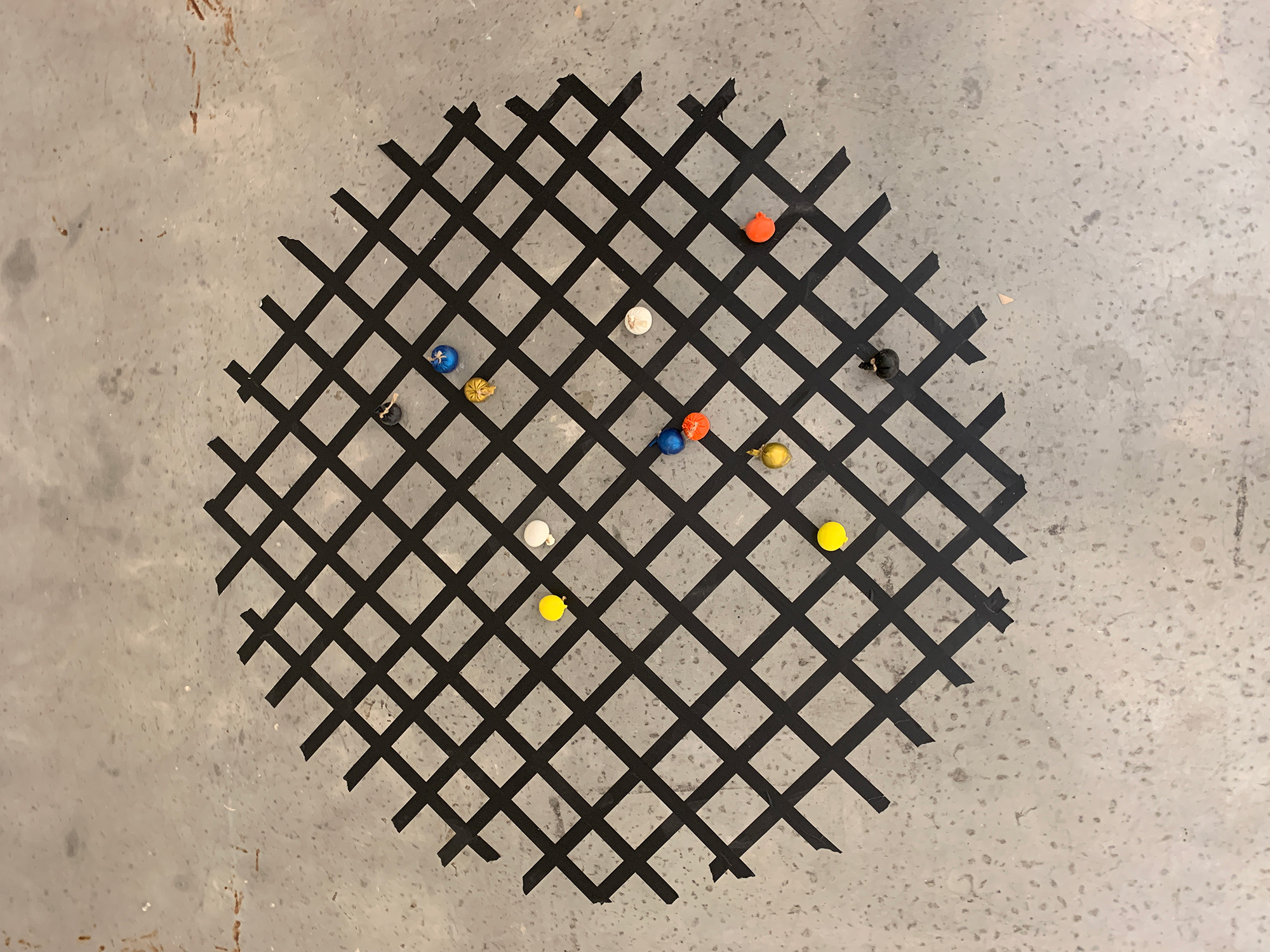
The Zoning Floor.
The first piece of furniture, called the "Zoning Floor," is almost like a lawn game. "It's an icebreaker spot," Isabel says. Participants in the negotiation process would toss differently coloured beanbags onto a large grid on the floor. Each beanbag would represent a different kind of land use — like housing, retail, or energy production. After tossing their beanbags, participants would engage in a structured discussion about the advantages and disadvantages of the impromptu land-use map they'd just created.
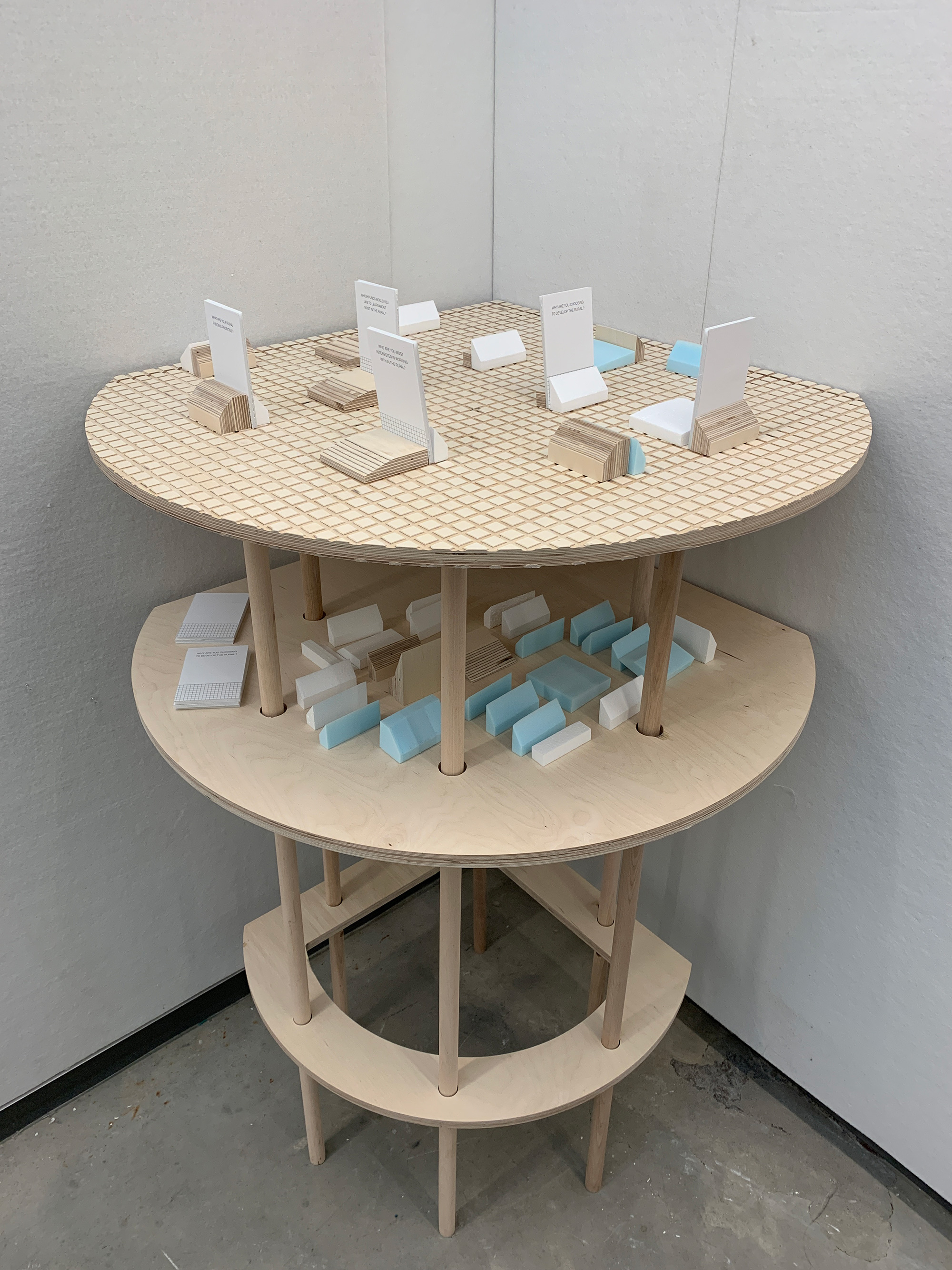
The Talking Table.
Isabel's "Talking Table" is a space where different actors can learn about one another's views. The table is stocked with cards with questions printed on them, like "Why are you choosing to develop the rural?" Different participants in a land negotiation would gather around the table and use the questions on the cards to spark productive conversations about their different viewpoints.
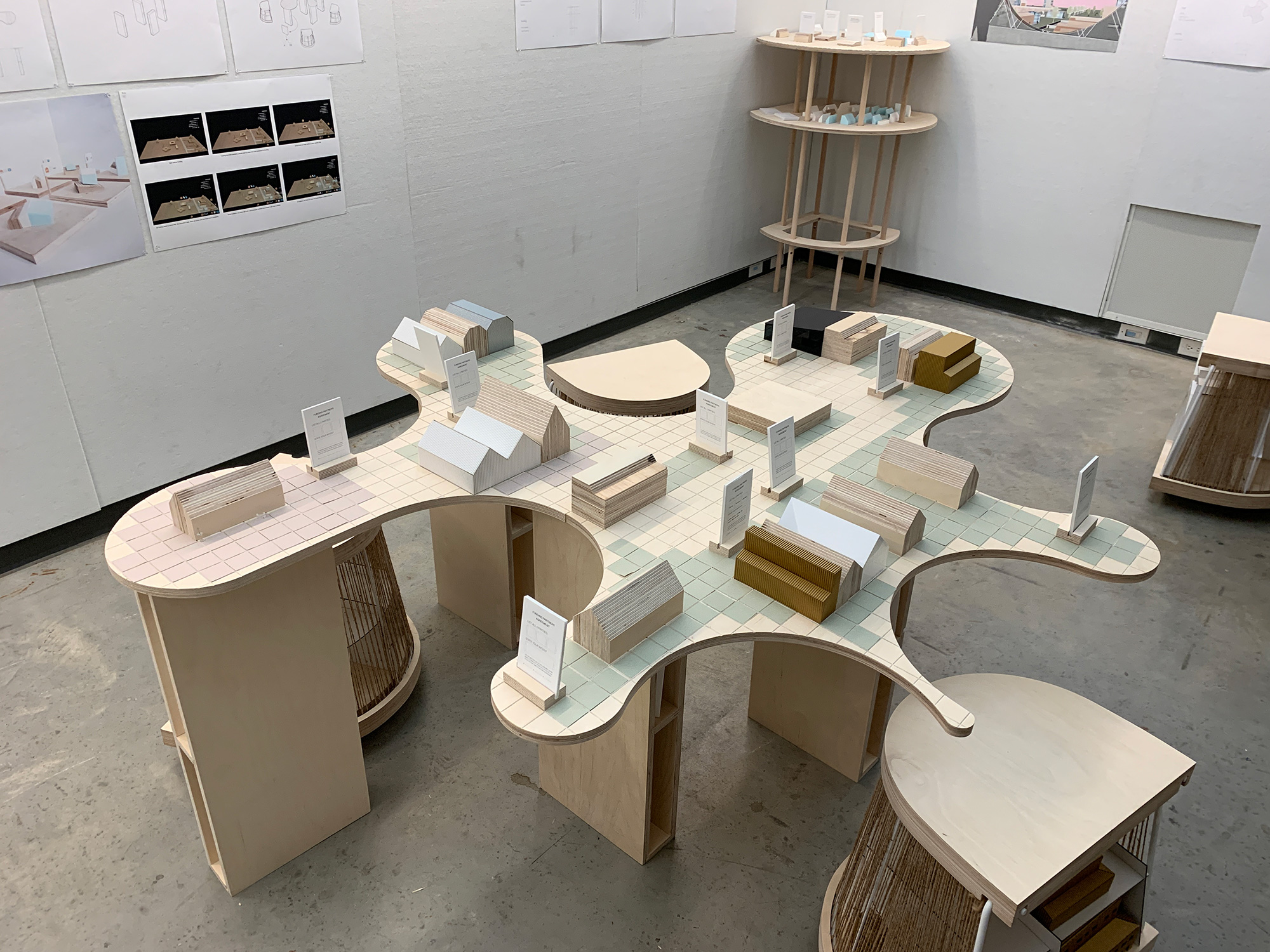
The Town Table.
The "Town Table" is the largest of Isabel's furniture pieces. Its blob-like shape is intended to provide plenty of space for several people to gather around. The stools around the table are equipped with storage shelves, each containing models of buildings. The differently coloured models are intended to represent different types of structures: agricultural buildings, institutional buildings, technological buildings, and so on.
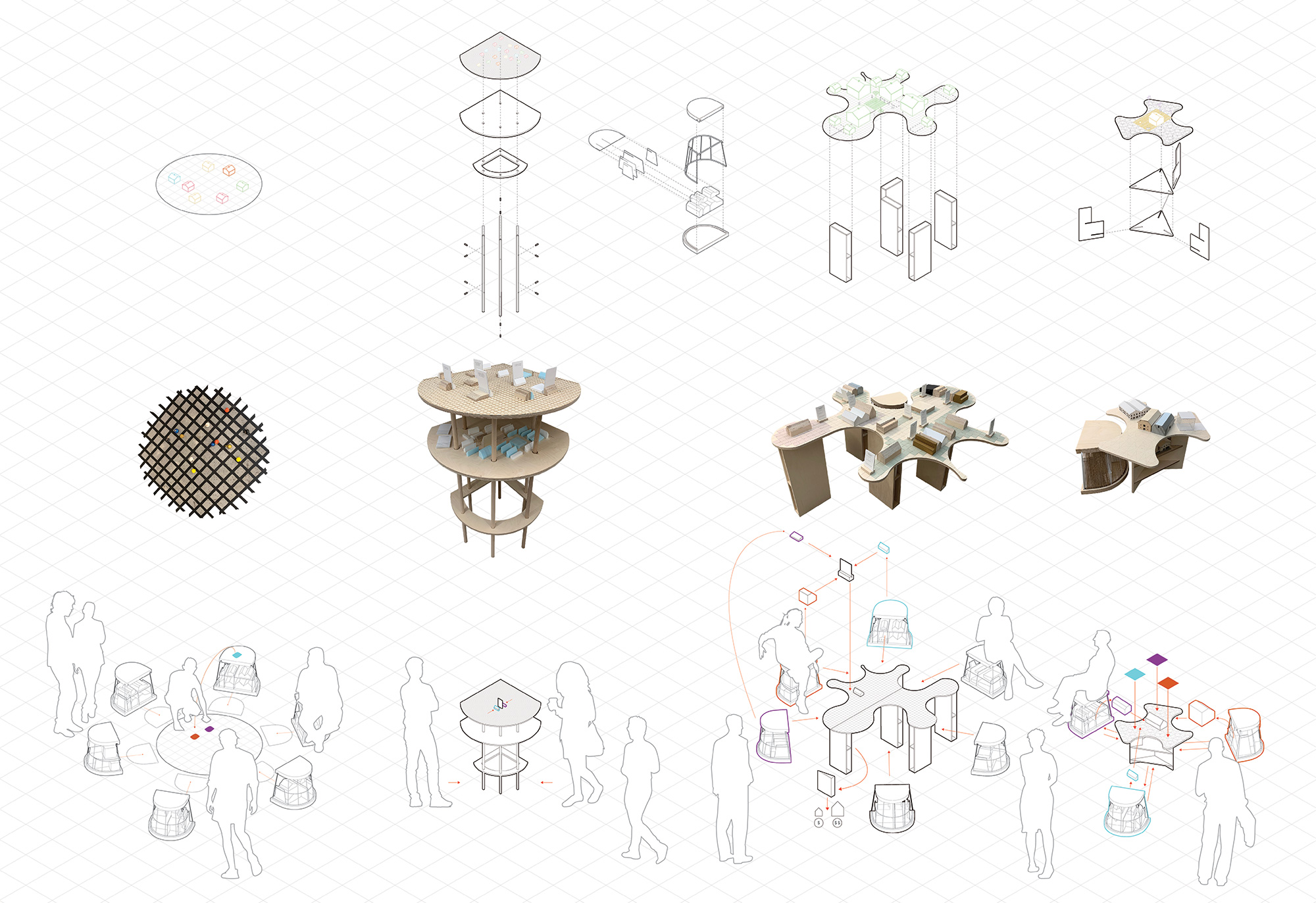
Illustrations of Isabel's various furniture pieces.
Participants in the negotiation process would place the models on the table in a way that represented the funding proposal under discussion. Larger buildings would represent properties that were eligible for larger amounts of funding. Green and red tiles would represent land that was either available (green) or unavailable (red) for redevelopment. "This table was mostly to create a space for townspeople to discuss what funds were being introduced, what properties would want to work together, what properties would not want to be part of this new funding, and how the funds would be dispersed among the town," Isabel says.
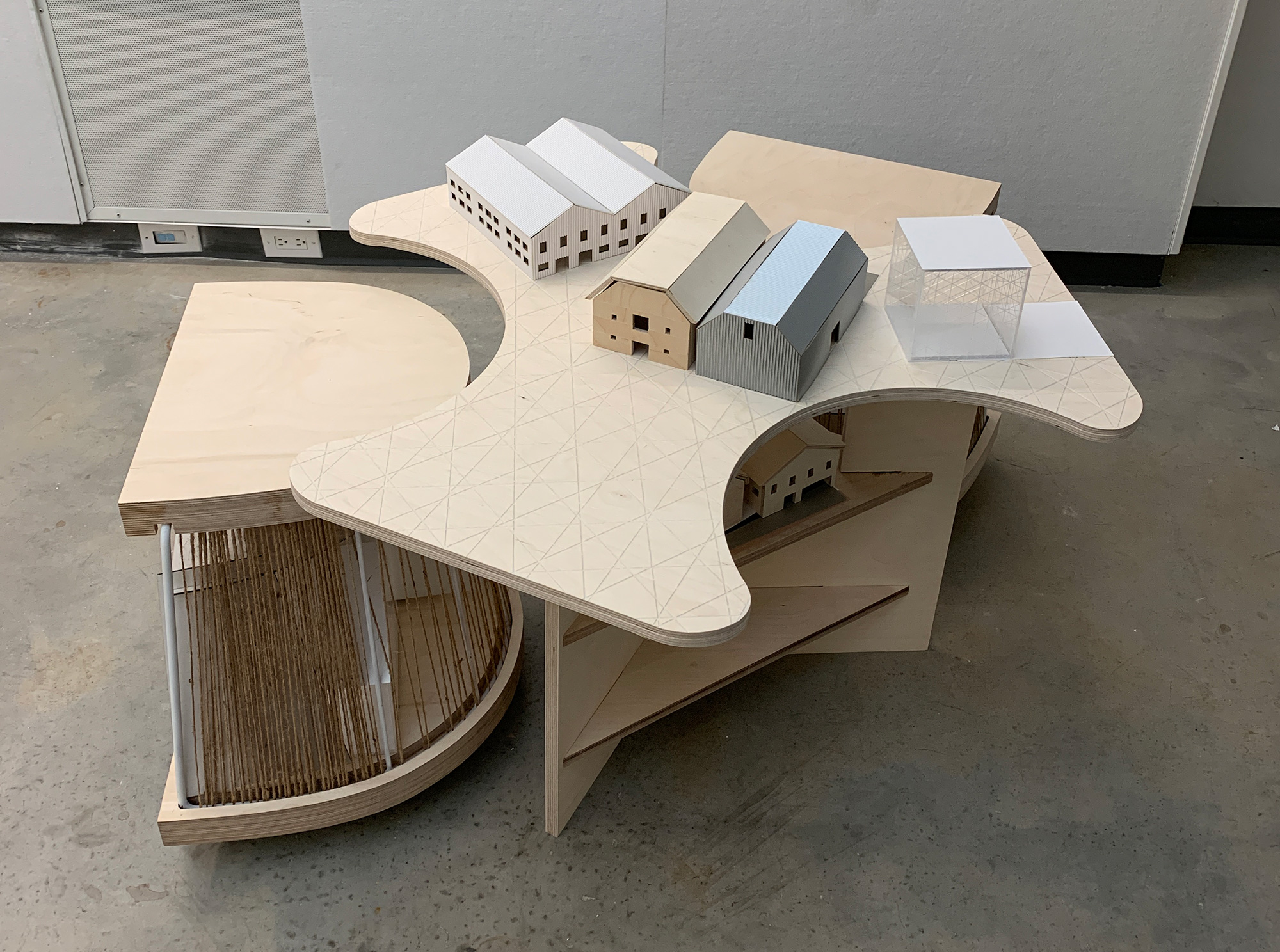
The Property Table.
The final piece in the furniture assortment is the "Property Table." It's a smaller piece, intended to facilitate discussion among just two or three different parties. The table's surface is large enough to hold a few building models, which the negotiation participants would use as visual aids as they discussed the implications of public investment in one property, or a few adjacent properties.
Advisor: Mason White
Top image: A map showing different funding sources manifested as physical buildings and infrastructure.

